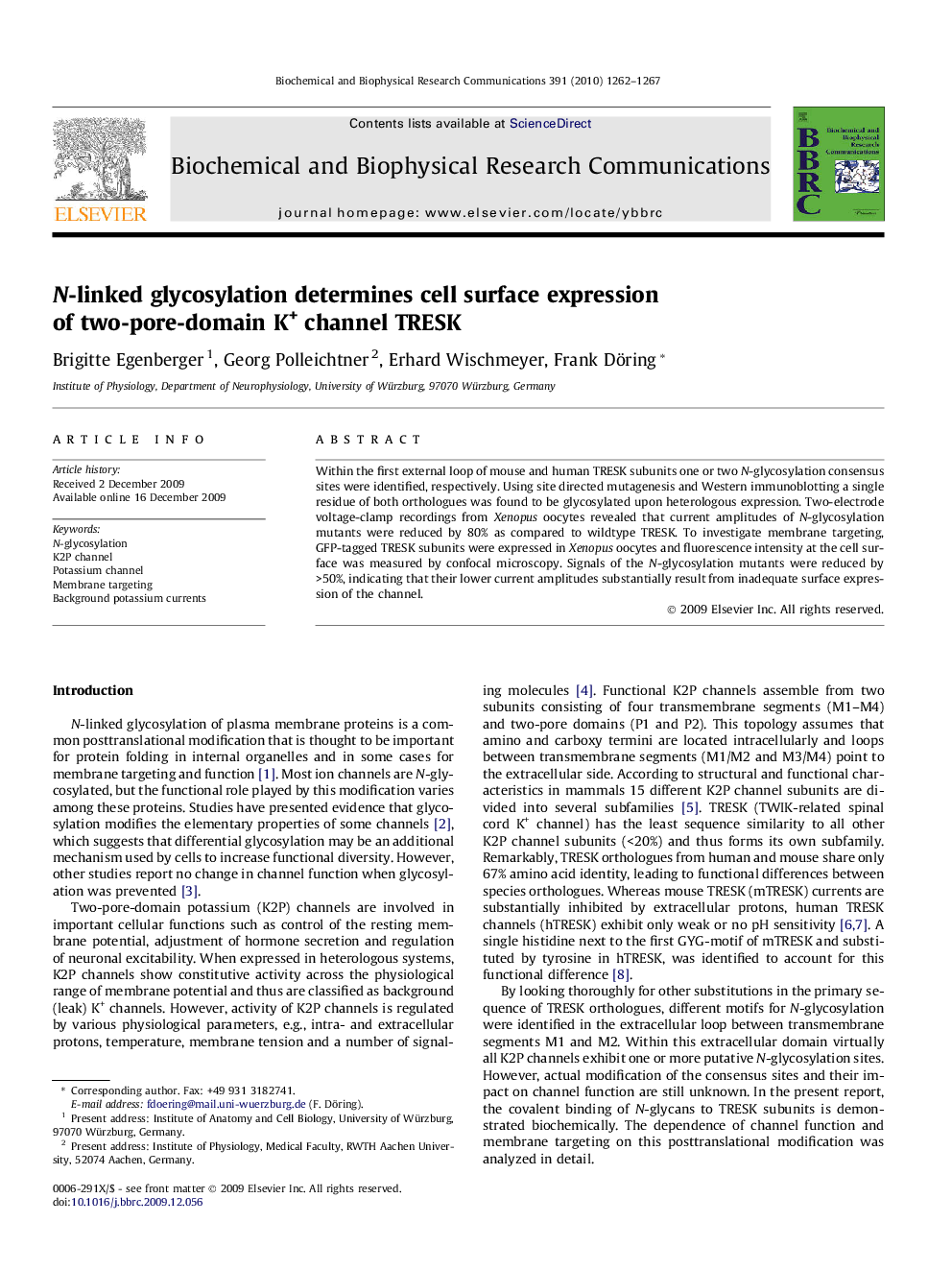| Article ID | Journal | Published Year | Pages | File Type |
|---|---|---|---|---|
| 1932458 | Biochemical and Biophysical Research Communications | 2010 | 6 Pages |
Within the first external loop of mouse and human TRESK subunits one or two N-glycosylation consensus sites were identified, respectively. Using site directed mutagenesis and Western immunoblotting a single residue of both orthologues was found to be glycosylated upon heterologous expression. Two-electrode voltage-clamp recordings from Xenopus oocytes revealed that current amplitudes of N-glycosylation mutants were reduced by 80% as compared to wildtype TRESK. To investigate membrane targeting, GFP-tagged TRESK subunits were expressed in Xenopus oocytes and fluorescence intensity at the cell surface was measured by confocal microscopy. Signals of the N-glycosylation mutants were reduced by >50%, indicating that their lower current amplitudes substantially result from inadequate surface expression of the channel.
